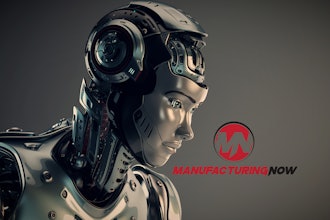There is growing consensus in the manufacturing community that it’s time for the traditional top-down culture to go the way of male-only executive suites. Inspired by the nimbleness of startups and the mindset of millennials, as well as the ongoing need to work smarter and faster, manufacturers increasingly view a shift to a less rigid environment as a means of attracting and retaining talent, improving problem-solving, gaining a competitive edge and propelling business growth.
The push for change is affecting companies of all sizes. In March, technology giant Samsung announced a culture shakeup intended to reverse sluggish sales and declining profits. “We aim to reform our internal culture, execute as quickly as a startup company, and push towards open communication and continuously innovate," the company told Reuters in a statement. One assumes that change will extend to the plant floor.
As analysts have noted, the ability of a conservative and highly hierarchical Korean organization like Samsung to create a flexible, collaborative manufacturing culture remains to be seen. But other companies have certainly succeeded and reaped the benefits.
One manufacturer that has taken this path is MBX Systems, a builder of custom computer servers enabling software developers to deliver performance-optimized business applications to end customers around the globe.
In the last few years, the company has doubled its workforce, octupled the size of its manufacturing floor and logged 94 percent employee retention at a time when many companies are struggling with a sizeable talent drain. Much of the credit goes to an open and engaged work culture in which employees themselves have driven a variety of innovations enabling the company to optimize its high-mix manufacturing environment and win business away from Fortune 500 competitors.
This culture has been established over a period of years and is sustained through both standing programs and periodic special initiatives. Here are seven techniques that MBX adopted to encourage a free exchange of ideas, cultivate talent, and help keep sales, services and customer satisfaction climbing.
No. 1 – Run Fun Cross-Functional Team Exercises
Connecting people from different areas of the manufacturing floor can promote creativity and teamwork. To do that, the manufacturing department assembles cross-functional teams to play problem-solving games on a bi-monthly basis. One recent game involved a challenge to construct the tallest standing skyscraper out of spaghetti and tape, utilizing random teams consisting of technicians from configuration, QC, documentation, assembly and RMA.
Exercises like these help foster collaboration between technicians with disparate responsibilities, break down functional silos that hamper change, and build problem-solving skills that carry over to the real-life manufacturing environment.
No. 2 – Actively Engage Employees in Process Improvement
Just saying that you’re open to suggestions isn’t enough. Proactively solicit ideas for operations improvements in weekly, bi-weekly and monthly meetings with different manufacturing teams. This consistent, no-holds-barred dialogue paves the way for technical advances that can both increase employee job satisfaction and bolster the bottom line.
Several years ago, for example, these discussions prompted development of a proprietary shop floor system that strengthened scheduling, workload distribution and quality procedures. More recently, these sessions sparked a complex project enabling a single operator to concurrently manage software imaging, testing and final configuration of more than 600 custom hardware systems. These are big returns for a very simple information-gathering strategy.
No. 3 – Get Creative with Your Change Campaign
A little cleverness can go a long way in stimulating fresh ideas. That was the case with a profit-building campaign that was launched a few years ago asking employees to suggest strategies for trimming budget fat. The program was rolled out at the company’s annual meeting under the name “Net Driver,” complete with a logo, a race car-shaped tins of mints, and a NASCAR-inspired hat. No incentives or rewards were offered. It was simply a request that workers help the company “drive the net” by identifying cost-cutting opportunities.
The campaign generated $700,000+ in savings plus a 23 percent increase in net profits over the next 12 months. Changes spurred by the effort included creation of a video training library for new production employees that eliminated an estimated 280 hours of human training annually, a new demand planning process that substantially increased early pay discounts and vendor rebates for system components, and a wide range of other initiatives that added up to significant cost recovery.
No. 4 – Put Power Directly in Employees’ Hands
Do this selectively, of course. For example, individual builders and assembly technicians at our company are encouraged to add comments and suggest improvements to work instructions on the visual build documents developed for each custom-engineered hardware platform by documentation technicians. These documents show every component location, cable turn, screw torque level and more to facilitate correct assembly. Every change is tracked to be sure that it can be traced back to the source.
Enabling anyone on the production team to recommend these changes shows confidence in employees’ abilities and helps create the collaborative environment that defines a progressive manufacturing culture. It also pays off in added efficiency and reduced assembly errors.
No. 5 – Go the Extra Training Mile
Breaking the old manufacturing culture mold also means making an extra effort to build talent from the inside in order to minimize skill gaps, groom employees to move into other positions, and develop the best possible talent pool. That requires stepping up both training and cross-training activities.
To that end, manufacturing team members undergo cross-training that allows them to move between workstations when necessary to avoid pending bottlenecks, cover for absent employees and so on. They also periodically shadow employees in other departments in order to support the company’s goal of promoting from within. Steps like these have led to personnel moves from production to areas such as support and engineering as new positions have opened up, filling open seats faster while also avoiding losing valuable employees to opportunities with other companies.
No. 6 – Communicate Loud, Clear & Often
It’s hard for employees to be engaged if management doesn’t engage them back. The cure for that is to utilize every possible communication channel to impart information, raise issues, recognize work effort and facilitate an open dialogue with company leaders.
At our company, that communication begins with one-on-one meet and greet sessions with each member of the executive management team when a new employee comes on board. It then continues with daily standup meetings on the plant floor, company newsletters, quarterly all-company meetings and other forums where managers share company performance metrics and open the floor to employee questions. The quarterly town hall-style meetings also include presentations during which each department head shares any major individual or group contributions that had measurable results, augmenting other recognition methods from newsletter kudos to Employee Appreciation Week.
No. 7 – Keep it Fresh
After a while, the same strategies and motivators can begin to fall on deaf ears. For that reason, our company recently introduced a new framework for keeping its corporate identity and culture top of mind. The initiative promotes seven actions that express the open, entrepreneurial environment that we strive to maintain, from ‘Stay Ahead’ to ‘Deliver Personalized Solutions.’ Each of the seven are the focus of a series of weekly culture campaigns, and are being integrated into company communications in other ways.
At the end of the day, the impetus for culture change in any manufacturing organization has to come from the top. It can be a tough nut to crack for a company with a deeply entrenched traditional mentality.
But it can help increase competitiveness in the marketplace, enhance job satisfaction, stem the turnover tide that afflicts many firms today, and even increase the appeal to younger jobseekers looking for a more dynamic work environment. For many manufacturers, those are ample motivations to embark on a culture transformation.
Jill Bellak is President of MBX Systems.






















